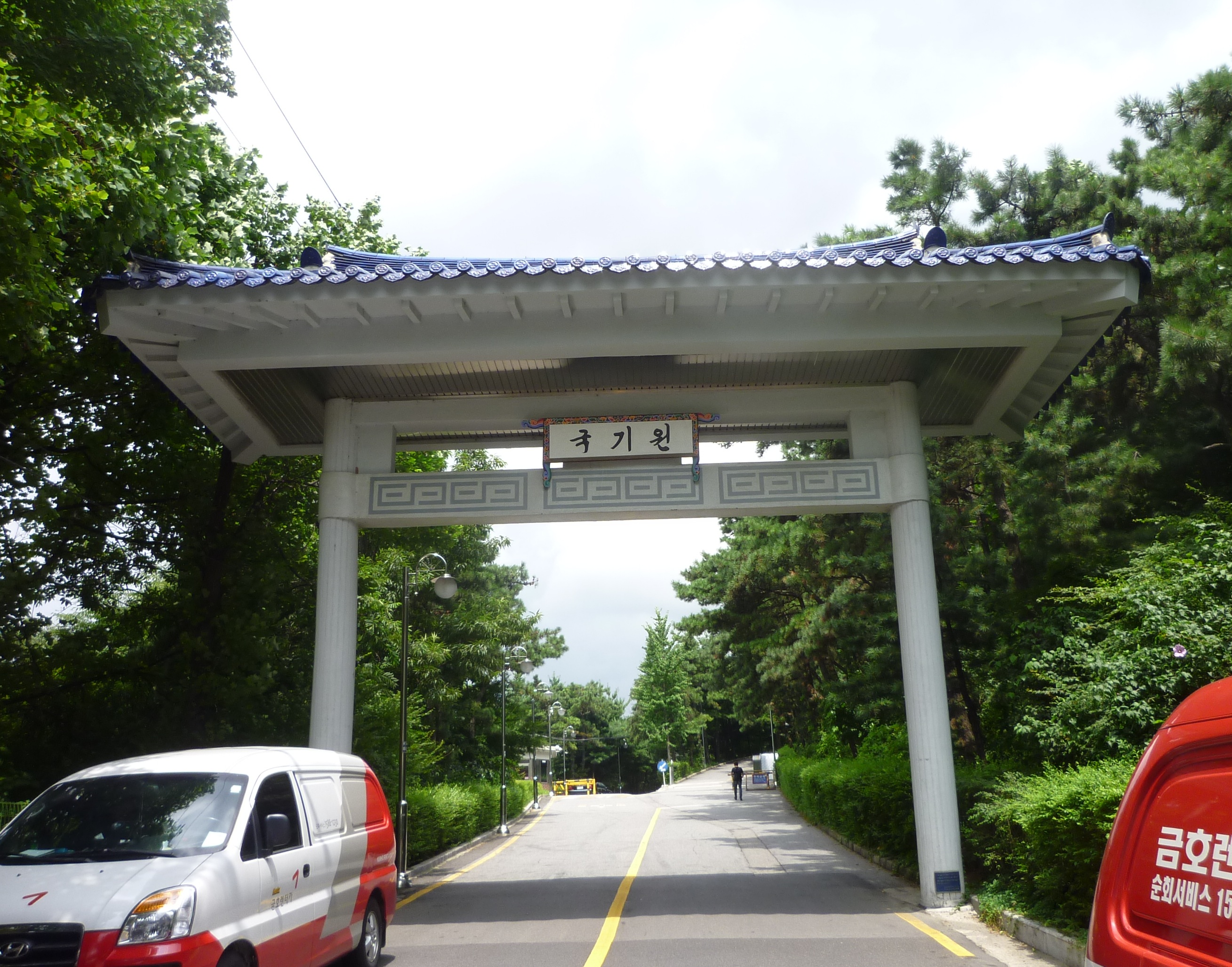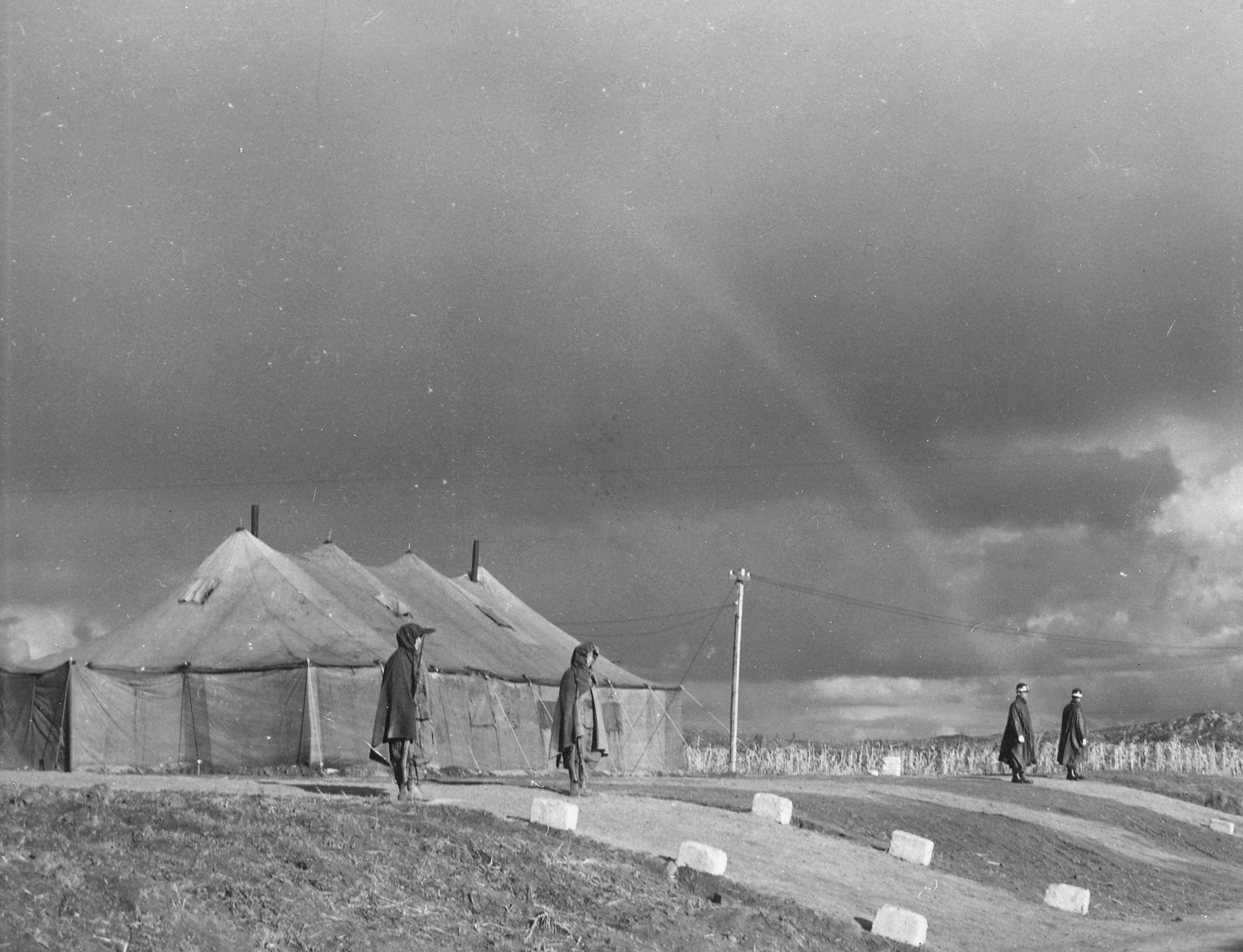|
Han Moo Kwan
Han Moo Kwan, was founded in August 1954 by Kyo-yoon Lee and is one of the nine original Kwans that later formed Kukkiwon Taekwondo. Lee was a student at the Chosun Yun Moo Kwan Kwon Bop Bu (sometimes spelled "Yun Mu Kwan" in English transliteration), learning from its founder, Sang-sap Chun. Later, after the Korean War {{Infobox military conflict , conflict = Korean War , partof = the Cold War and the Korean conflict , image = Korean War Montage 2.png , image_size = 300px , caption = Clockwise from top:{ ... Armistice Agreement was signed in 1953, Lee started teaching the returning Yun Moo Kwan Kwon Bop Bu members at the Hankuk Chaeyuk Kwan Dojang. He had conflicts with Chong-woo Lee and left to start his own annex Kwan by setting up a tent at a high school. Later, Chong-woo Lee changed the Yun Moo Kwan Kwon Bop Bu's name to Jidokwan. Kyo-yoon Lee states that Han Moo Kwan is from Choson Yun Moo Kwan Kwon Bop Bu, ... [...More Info...] [...Related Items...] OR: [Wikipedia] [Google] [Baidu] |
Kwans
Kwan (Hanja: 館; Hangul:관) in Korean literally means building or hall, but when used in martial arts it can also refer to a school or clan of martial artists who follow the same style and/or leader. Taekwondo: The Five Kwans / The Nine Kwans In the context of taekwondo, the phrase ''the five kwans'' refers to the first five martial arts schools to open in Korea following the end of Japanese occupation at the end of World War II. * Song Moo Kwan(송무관) - first of the original kwans, founded in Kaesong on March 20,1944 by Ro Byung Jik(노병직), who had studied karate under Gichin Funakoshi along with Chung Do Kwan founder Lee Won Kuk in Japan. * Chung Do Kwan(청도관) - second kwan dojang in Korea founded in September, 1944 by Lee Won Kuk(이원국). He had studied Taekkyeon in Seoul, He also studied Shotokan Karate in Japan, Kung Fu in Henan and Shanghai in China, and other. * Moo Duk Kwan(무덕관) - founded 1945 by Hwang Kee(황기) teaching Hwa Soo Do. Hwang st ... [...More Info...] [...Related Items...] OR: [Wikipedia] [Google] [Baidu] |
Kukkiwon
Kukkiwon (), also known as World Taekwondo Headquarters, and home of the World Taekwondo Academy, is where the official taekwondo governing organization was established by the South Korean government.Min, B.-H. (2005)Kukkiwon, the spiritual home of Taekwondoists(11 July 2005). Published on the website of the Embassy of the Republic of Korea in the USA. Retrieved on 10 January 2010. It is supervised by the International Sports Division of the Ministry of Culture, Sports, and Tourism.Ministry of Culture, Sports and Tourism of the Republic of Korea: Bureau of Office Retrieved on 9 January 2010. History [...More Info...] [...Related Items...] OR: [Wikipedia] [Google] [Baidu] |
Taekwondo
''Taekwondo'', ''Tae Kwon Do'' or ''Taekwon-Do'' (; ko, 태권도/跆拳道 ) is a Korean form of martial arts involving punching and kicking techniques, with emphasis on head-height kicks, spinning jump kicks, and fast kicking techniques. The literal translation for tae kwon do is "kicking", "punching", and "the art or way of". They are a kind of martial arts in which one attacks or defends with hands and feet anytime or anywhere, with occasional use of weapons. The physical training undertaken in Taekwondo is purposeful and fosters strength of mind through mental armament. Taekwondo practitioners wear a uniform, known as a dobok. It is a combat sport and was developed during the 1940s and 1950s by Korean martial artists with experience in martial arts such as karate, Chinese martial arts, and indigenous Korean martial arts traditions such as Taekkyon, Subak, and Gwonbeop. The oldest governing body for Taekwondo is the Korea Taekwondo Association (KTA), formed in 1959 th ... [...More Info...] [...Related Items...] OR: [Wikipedia] [Google] [Baidu] |
Yun Moo Kwan
Yun Mu Kwan (Hangul: 연무관, Hanja: 研武館, eng.''Hall or Institute for Martial Study'') was one of the original five "kwans" that arose in Korea following World War II. It was the name of the place where a generic form of Japanese karate (Shotokan) was being taught by a number of Korean students who had studied in Japan and returned to Korea in the first half of the twentieth century, bringing the Japanese art with them. Yun Mu Kwan, as a style, would eventually be renamed Jidokwan by various former students and would become one of the core styles that contributed to the development of what is today known as Taekwondo. Unlike the other kwans, the ''Yun Mu Kwan,'' as a name for a distinct style, disappeared very early in the history of Korean karate and was never formally consolidated into the new Korean national sport of taekwondo although Jidokwan, its successor style, was. There are groups today, however, that still make use of the older name. History The Yun Mu Kwan ... [...More Info...] [...Related Items...] OR: [Wikipedia] [Google] [Baidu] |
Kwon Bop
Gwon also written as Kwon () is a Korean family name. Some sources list as many 56 clans, but most of them were merged with the Andong Gwon clan under the Sijeung-gong faction soon after the establishment of the Goryeo Kingdom. Andong Gwon clan The founder of Andong Gwon clan, Kim Haeng (金幸), was originally a royalty of the Silla Gyeongju Kim clan. He participated in the Battle of Gochang and helped Taejo, who established the Kingdom of Goryeo in 918; the new king bestowed upon Kim Haeng a new surname: Gwon (權), as he could judge the situation correctly and achieve a purpose flexibly (能炳幾達權). Yecheon Gwon clan One account has its original surname was Heun (昕). However, in 1197, the name Heun (昕) was chosen as the posthumous name for the Goryeo kingdom's King Myeongjong. To avoid the use of a king's posthumous name, the Heun (昕) family were directed to change their name to Gwon (權). The head of the Heun clan at this time became Gwon So, the founding ... [...More Info...] [...Related Items...] OR: [Wikipedia] [Google] [Baidu] |
Yun Mu Kwan
Yun Mu Kwan (Hangul: 연무관, Hanja: 研武館, eng.''Hall or Institute for Martial Study'') was one of the original five "kwans" that arose in Korea following World War II. It was the name of the place where a generic form of Japanese karate (Shotokan) was being taught by a number of Korean students who had studied in Japan and returned to Korea in the first half of the twentieth century, bringing the Japanese art with them. Yun Mu Kwan, as a style, would eventually be renamed Jidokwan by various former students and would become one of the core styles that contributed to the development of what is today known as Taekwondo. Unlike the other kwans, the ''Yun Mu Kwan,'' as a name for a distinct style, disappeared very early in the history of Korean karate and was never formally consolidated into the new Korean national sport of taekwondo although Jidokwan, its successor style, was. There are groups today, however, that still make use of the older name. History The Yun Mu Kwan ... [...More Info...] [...Related Items...] OR: [Wikipedia] [Google] [Baidu] |
Korean War
, date = {{Ubl, 25 June 1950 – 27 July 1953 (''de facto'')({{Age in years, months, weeks and days, month1=6, day1=25, year1=1950, month2=7, day2=27, year2=1953), 25 June 1950 – present (''de jure'')({{Age in years, months, weeks and days, month1=6, day1=25, year1=1950) , place = Korean Peninsula, Yellow Sea, Sea of Japan, Korea Strait, China–North Korea border , territory = Korean Demilitarized Zone established * North Korea gains the city of Kaesong, but loses a net total of {{Convert, 1506, sqmi, km2, abbr=on, order=flip, including the city of Sokcho, to South Korea. , result = Inconclusive , combatant1 = {{Flag, First Republic of Korea, name=South Korea, 1949, size=23px , combatant1a = {{Plainlist , * {{Flagicon, United Nations, size=23px United Nations Command, United Nations{{Refn , name = nbUNforces , group = lower-alpha , On 9 July 1951 troop constituents were: US: 70.4%, ROK: 23.3% other UNC: 6.3%{{Cite ... [...More Info...] [...Related Items...] OR: [Wikipedia] [Google] [Baidu] |
Korean Armistice Agreement
The Korean Armistice Agreement ( ko, 한국정전협정 / 조선정전협정; zh, t=韓國停戰協定 / 朝鮮停戰協定) is an armistice that brought about a complete cessation of hostilities of the Korean War. It was signed by United States Army Lieutenant General William Harrison Jr. and General Mark W. Clark representing the United Nations Command (UNC), North Korea leader Kim Il-sung and General Nam Il representing the Korean People's Army (KPA), and Peng Dehuai representing the Chinese People's Volunteer Army (PVA). The armistice was signed on 27 July 1953, and was designed to "ensure a complete cessation of hostilities and of all acts of armed force in Korea until a final peaceful settlement is achieved." During the 1954 Geneva Conference in Switzerland, Chinese Premier and foreign minister Chou En-lai suggested that a peace treaty should be implemented on the Korean peninsula. However, the US secretary of state, John Foster Dulles, did not accommodate this attemp ... [...More Info...] [...Related Items...] OR: [Wikipedia] [Google] [Baidu] |
Jidokwan
Jidokwan is one of the original nine schools of the modern Korean martial arts that became Taekwondo and was founded in what is now South Korea at the end of World War II. Its name translates as "School of Wisdom". The Jidokwan in Korea still exists today. It functions as a social fraternal order. Jidokwan supports and endorses the Kukkiwon method of Taekwondo, and supports World Taekwondo (formerly the World Taekwondo Federation). Etymology Jidokwan means "the Way of Wisdom School" with "ji" (지) = wisdom, "do" (도) = way and "kwan" (관) meaning either hall, school or institute, depending on context. History The foundations of what was to eventually become Jidokwan were laid down by GM CHUN Sang Sup, who was one of the earliest Koreans to bring Japanese karate back to his homeland. When he was seventeen years old, GM Chun relocated to Japan to attend College at Takushoku University in Japan, where he took up ''Shotokan'' karate under Gichin Funakoshi Sensei, the fou ... [...More Info...] [...Related Items...] OR: [Wikipedia] [Google] [Baidu] |
Sports Organizations Established In 1954
Sport pertains to any form of competitive physical activity or game that aims to use, maintain, or improve physical ability and skills while providing enjoyment to participants and, in some cases, entertainment to spectators. Sports can, through casual or organized participation, improve participants' physical health. Hundreds of sports exist, from those between single contestants, through to those with hundreds of simultaneous participants, either in teams or competing as individuals. In certain sports such as racing, many contestants may compete, simultaneously or consecutively, with one winner; in others, the contest (a ''match'') is between two sides, each attempting to exceed the other. Some sports allow a "tie" or "draw", in which there is no single winner; others provide tie-breaking methods to ensure one winner and one loser. A number of contests may be arranged in a tournament producing a champion. Many sports leagues make an annual champion by arranging games in a ... [...More Info...] [...Related Items...] OR: [Wikipedia] [Google] [Baidu] |



